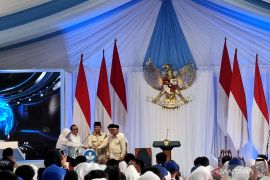The ship has left Taiwan and is set to start testing as early as next Wednesday, said the environmental activist group, which has also been monitoring aerial and soil radiation and food produce near the atomic plant.
Plant operator Tokyo Electric Power Co. (TEPCO) said Thursday that some 520 tonnes of runoff which reached the sea from April 1-6 through a crack in a storage pit had reached about 4,700 terabecquerels -- 20,000 times above the plant`s legal annual limit.
TEPCO has also dumped 10,000 tons of lower-level radioactive water into the Pacific Ocean to free up storage space for more highly contaminated runoff that has resulted from weeks of emergency reactor dousing operations.
Greenpeace Japan executive director Junichi Sato said water testing was important because "Japan relies heavily on the ocean to feed itself."
"Given the continual leaking of radioactive water into the marine environment -- including TEPCO`s release of huge quantities of contaminated water -- it is critical that independent testing is undertaken, in order to assess the true extent of the contamination and the possible impacts on public health and the food web," Sato said in a statement.
"We have informed Japan`s government and are currently working through the appropriate channels to ensure we can add marine research to the radiation monitoring already carried by our land-based teams in the Fukushima area."
Greenpeace launched its first Rainbow Warrior in 1978 and sent it to Pacific waters on protest campaigns against US and French nuclear testing, before it was sunk by French agents at a New Zealand port in 1985.
The Rainbow Warrior II was launched in 1989 and is now nearing its recommended decommissioning date, after which it will be replaced by the purpose-built Rainbow Warrior III, the group said.
(Uu.G003/H-AK)
Editor: Priyambodo RH
Copyright © ANTARA 2011












